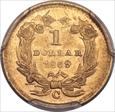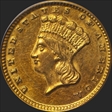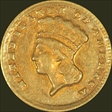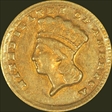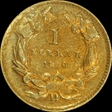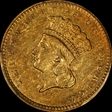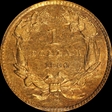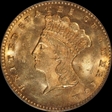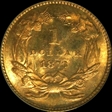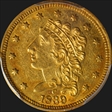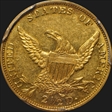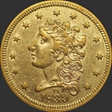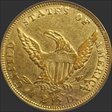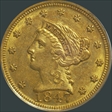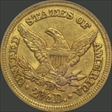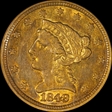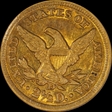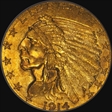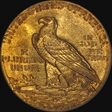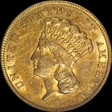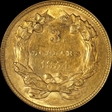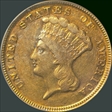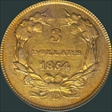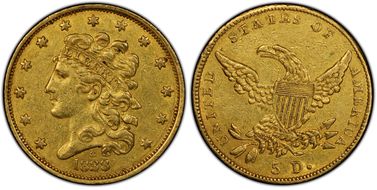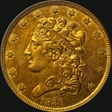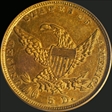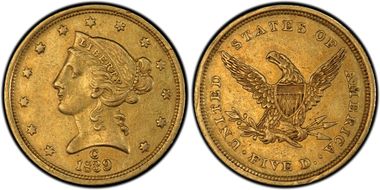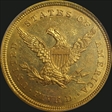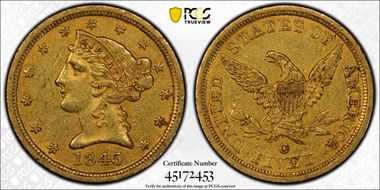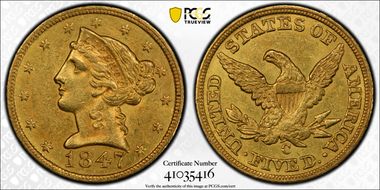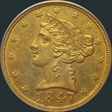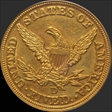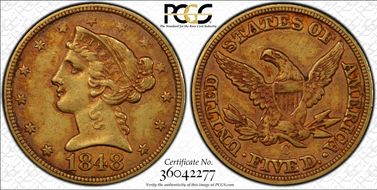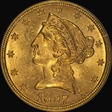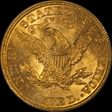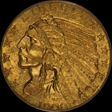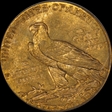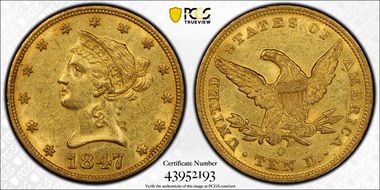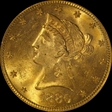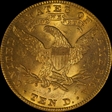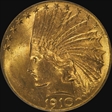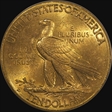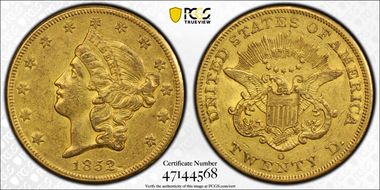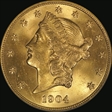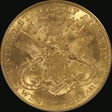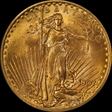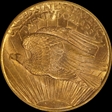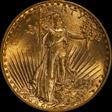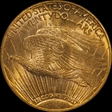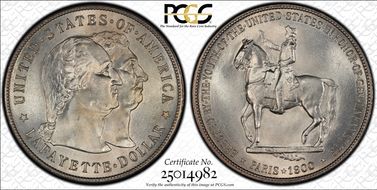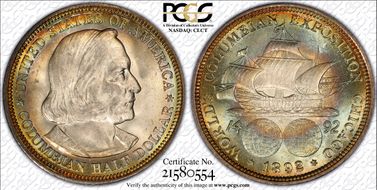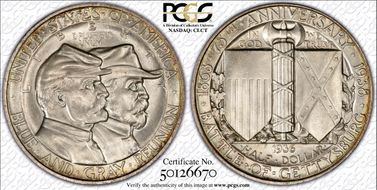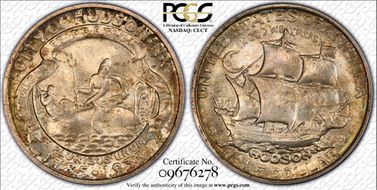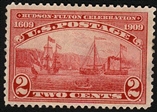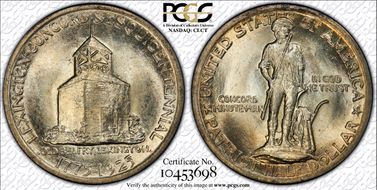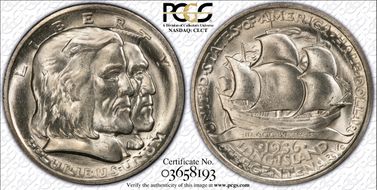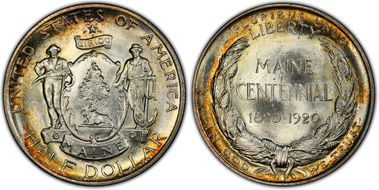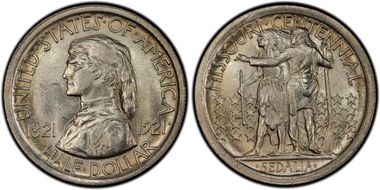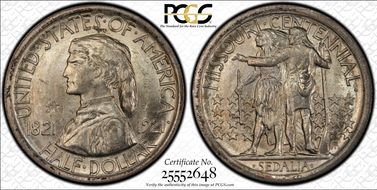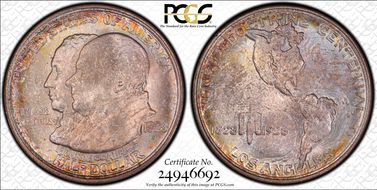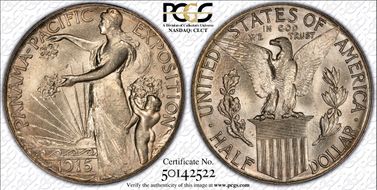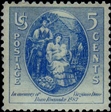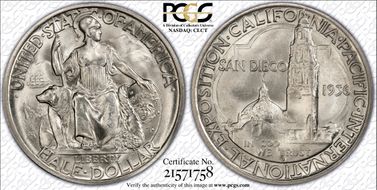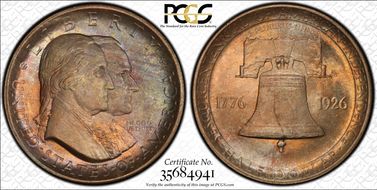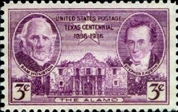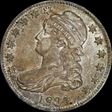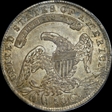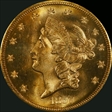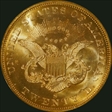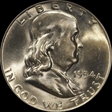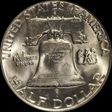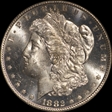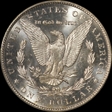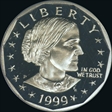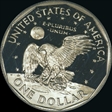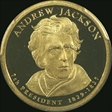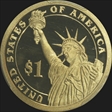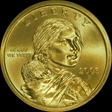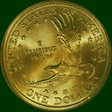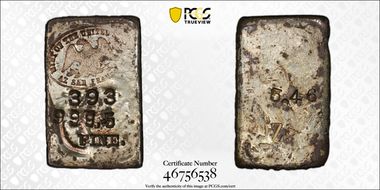OverlandTrail 的钱币相册
The most difficult denomination of the "Spanish Milled Coinage" to find. This piece graded VF30 shows heavy circulation. This coin was minted at the Potosi Mint in Bolivia and bears the PTS mintmark.
The most difficult denomination of the "Spanish Milled Coinage" to find. This piece graded VF30 shows heavy circulation. This coin was minted at the Potosi Mint in Bolivia and bears the PTS mintmark.
The most difficult denomination of the "Spanish Milled Coinage" to find. This piece graded VF30 shows heavy circulation. This coin was minted at the Potosi Mint in Bolivia and bears the PTS mintmark.
The 1/2 Real is the smallest denomination of Spanish Milled Coinage being valued at 6 1/4 cents. It takes 16 of the 1/2 Real coins to equal 1 Spanish Milled Dollar. This piece is graded XF40, darkly toned with nice surfaces and details. Minted in Mexico City.
The 1/2 Real is the smallest denomination of Spanish Milled Coinage being valued at 6 1/4 cents. It takes 16 of the 1/2 Real coins to equal 1 Spanish Milled Dollar. This piece is graded XF40, darkly toned with nice surfaces and details. Minted in Mexico City.
The 1 Real denomination was the workhorse coin of the Spanish Empire of the 18th century. Most specimens are very worn with little detail remaining. This piece, graded MS61, shows bold strike and details with mint lustre peering through the dark toning. The rim and edge detail is virtually intact with only slight weakness. A superb example of 1700's pillar coinage.
The 1 Real denomination was the workhorse coin of the Spanish Empire of the 18th century. Most specimens are very worn with little detail remaining. This piece, graded MS61, shows bold strike and details with mint lustre peering through the dark toning. The rim and edge detail is virtually intact with only slight weakness. A superb example of 1700's pillar coinage.
The 1 Real denomination was the workhorse coin of the Spanish Empire of the 18th century. Most specimens are very worn with little detail remaining. This piece, graded MS61, shows bold strike and details with mint lustre peering through the dark toning. The rim and edge detail is virtually intact with only slight weakness. A superb example of 1700's pillar coinage.
The 2 reales denomination is referred to as "two bits" as it is two pieces of a "Piece of Eight", the 8 reales coin. Each bit is worth approximately 121/2 cents, therefore "two bits" is worth about one quarter dollar. This specimen was minted in Mexico City and bears a "M" mintmark.
The 2 reales denomination is referred to as "two bits" as it is two pieces of a "Piece of Eight", the 8 reales coin. Each bit is worth approximately 121/2 cents, therefore "two bits" is worth about one quarter dollar. This specimen was minted in Mexico City and bears a "M" mintmark.
The 2 reales denomination is referred to as "two bits" as it is two pieces of a "Piece of Eight", the 8 reales coin. Each bit is worth approximately 121/2 cents, therefore "two bits" is worth about one quarter dollar. This specimen was minted in Mexico City and bears a "M" mintmark.
Otherwise known as the "Pillar Dollar" or "Piece of Eight", this coin is the forerunner of the U. S. silver dollar. Before the Mint Act of 1792, the dollar value referenced in the Constitution is of the Spanish Milled Dollar. The coin remained legal tender until 1857 in the U. S. and circulated freely throughout the Americas. This piece was minted in Mexico City while Ferdinand VI ruled Spain.
Otherwise known as the "Pillar Dollar" or "Piece of Eight", this coin is the forerunner of the U. S. silver dollar. Before the Mint Act of 1792, the dollar value referenced in the Constitution is of the Spanish Milled Dollar. The coin remained legal tender until 1857 in the U. S. and circulated freely throughout the Americas. This piece was minted in Mexico City while Ferdinand VI ruled Spain.
The 1 real denomination was the workhorse of the Spanish monetary system. It took 8 reales or "8 bits" to equal a "Piece of Eight" or 2 reales to equal "2 bits". The 1 real or "1 bit" roughly equal to 12 1/2 cents. This piece has had a rough life with detail worn away due to circulation throughout the colonial Spanish Empire.
Mintage: 239,000. Draped Bust. Designed by Robert Scot. Large quantities exist from the Chapman Hoard, some red. This VF35 example is chocolate brown with even wear and good strike. Large 6 with Stems variety.
Mintage: 239,000. Draped Bust. Designed by Robert Scot. Large quantities exist from the Chapman Hoard, some red. This VF35 example is chocolate brown with even wear and good strike. Large 6 with Stems variety.
Boldly struck with clean, mark-free surfaces. Some spotty red areas, possibly from the Elmer Sears hoard. Designed and modified by William Kneass. A scarce issues in MS65
Boldly struck with clean, mark-free surfaces. Some spotty red areas, possibly from the Elmer Sears hoard. Designed and modified by William Kneass. A scarce issues in MS65
Mintage:56,500. Coronet Type designed by Christian Gobrecht. Lustrous near red surfaces adorn the obverse with spotty red reverse. Possibly from a hoard of pieces distributed by Pittsburgh dealer A. C. Giles. A scarce issues residing in an old green holder.
Mintage:56,500. Coronet Type designed by Christian Gobrecht. Lustrous near red surfaces adorn the obverse with spotty red reverse. Possibly from a hoard of pieces distributed by Pittsburgh dealer A. C. Giles. A scarce issues residing in an old green holder.
Robert Scot designed this coin of Miss Liberty with mintage commencing in 1796 and continuing until 1807. It is one of the more common dates with a mintage of over 3 million. This coin has an even chocolate coloration and nice strong strike.
Robert Scot designed this coin of Miss Liberty with mintage commencing in 1796 and continuing until 1807. It is one of the more common dates with a mintage of over 3 million. This coin has an even chocolate coloration and nice strong strike.
Robert Scot designed this coin of Miss Liberty with mintage commencing in 1796 and continuing until 1807. It is one of the more common dates with a mintage of over 3 million. This coin has an even chocolate coloration and nice strong strike.
While difficult to find without deficiencies, this nicely, chocolate toned issue has good strike on an unusually well made planchet with even surfaces. Most Classic cent are plagued by poorly made planchets and poor strikes.
While difficult to find without deficiencies, this nicely, chocolate toned issue has good strike on an unusually well made planchet with even surfaces. Most Classic cent are plagued by poorly made planchets and poor strikes.
Note the die break "connected stars". This coin was most likely part of the Randall Hoard. Well preserved and nearly mark free.
Note the die break "connected stars". This coin was most likely part of the Randall Hoard. Well preserved and nearly mark free.
Cartwheel lustre and amazingly red color. Looks like it was minted yeasterday
Cartwheel lustre and amazingly red color. Looks like it was minted yeasterday
Due to the rising expense of making large copper cents the small flying eagle cent was designed and began production in 1856
Due to the rising expense of making large copper cents the small flying eagle cent was designed and began production in 1856
Poor strike quality of the flying eagle cent brought about the redesign of the small cent in 1859
Poor strike quality of the flying eagle cent brought about the redesign of the small cent in 1859
Union sympathy during the "War of Northern Aggression" caused the addition of the shield on the reverse. It remained there until the end of the design in 1909.
Union sympathy during the "War of Northern Aggression" caused the addition of the shield on the reverse. It remained there until the end of the design in 1909.
First cent struck at a branch mint. The "S" mint mark was added to the reverse of this beautiful, red and lustrous example. It looks just like it was minted yesterday.
First cent struck at a branch mint. The "S" mint mark was added to the reverse of this beautiful, red and lustrous example. It looks just like it was minted yesterday.
Honoring Abraham Lincoln's 100th birthday the cent was redesigned in 1909. The tiny reverse VDB initials for designer Victor D. Brenner caused an uproar resulting in their removal the same year.
Honoring Abraham Lincoln's 100th birthday the cent was redesigned in 1909. The tiny reverse VDB initials for designer Victor D. Brenner caused an uproar resulting in their removal the same year.
Due to WWII all copper was removed from 1-cent pieces. The mint resorted to zinc plated steel planchets to produce these coins. This gem looks to be minted yesterday
Due to WWII all copper was removed from 1-cent pieces. The mint resorted to zinc plated steel planchets to produce these coins. This gem looks to be minted yesterday
The 1995 cent is the last major double die of the Lincoln series. Due to new manufacturing processes major double dies are no longer possible.
The 1995 cent is the last major double die of the Lincoln series. Due to new manufacturing processes major double dies are no longer possible.
The two cent piece was produced to make up the slack in the hoarding of silver and gold coinage. Only partly successful due to eventual hoarding of all metal U. S. coinage during the war.
The two cent piece was produced to make up the slack in the hoarding of silver and gold coinage. Only partly successful due to eventual hoarding of all metal U. S. coinage during the war.
Only silver three cent piece minted in New Orleans. This denomination circulated widely when other small silver coinage was being melted and exported. Being only 75% silver and 25% copper the alloy was know as billion and worth less than 3 cents, thus our first subsidiary coinage. Note the bold "O" mint mark.
Only silver three cent piece minted in New Orleans. This denomination circulated widely when other small silver coinage was being melted and exported. Being only 75% silver and 25% copper the alloy was know as billion and worth less than 3 cents, thus our first subsidiary coinage. Note the bold "O" mint mark.
Big nickel interest influenced Congress to produce a new nickel three cent piece. Mainly used for redemption of booklets of 3-cent notes, derogatorily called shinplasters, and finally discontinued in 1889.
Big nickel interest influenced Congress to produce a new nickel three cent piece. Mainly used for redemption of booklets of 3-cent notes, derogatorily called shinplasters, and finally discontinued in 1889.
With virtually no silver or gold coins circulating the mint chose to strike 5-cent nickel pieces similar to their 3-cent cousins. Difficulty with the hardness of the metal caused many specimens show cracked dies, clash marks, and other mint errors. This coin Is a proof DDO, a very unusual proof with all 500 coins from one die.
With virtually no silver or gold coins circulating the mint chose to strike 5-cent nickel pieces similar to their 3-cent cousins. Difficulty with the hardness of the metal caused many specimens show cracked dies, clash marks, and other mint errors. This coin Is a proof DDO, a very unusual proof with all 500 coins from one die.
The redesigning of the five cent piece in 1883 was another collossal blunder by the mint's engraving staff. The "NO CENTS", "Racketter Nickel" variety depicted here was widely gold plated and passed as a gold half eagle. This specimen is from the famed Eliasberg Collection.
The redesigning of the five cent piece in 1883 was another collossal blunder by the mint's engraving staff. The "NO CENTS", "Racketter Nickel" variety depicted here was widely gold plated and passed as a gold half eagle. This specimen is from the famed Eliasberg Collection.
The redesigning of the five cent piece in 1883 was another collossal blunder by the mint's engraving staff. The "NO CENTS", "Racketter Nickel" variety depicted here was widely gold plated and passed as a gold half eagle. This specimen is from the famed Eliasberg Collection.
The redesigning of the five cent piece in 1883 was another collossal blunder by the mint's engraving staff. The "NO CENTS", "Racketter Nickel" variety depicted here was widely gold plated and passed as a gold half eagle. This specimen is from the famed Eliasberg Collection.
Bold strike and outstanding luster with only the slightest toning at the periphery graces this carefully preserved example, An obverse clash mark occupies the field from nose to neck.
Bold strike and outstanding luster with only the slightest toning at the periphery graces this carefully preserved example, An obverse clash mark occupies the field from nose to neck.
Ample mint luster peers through the dark, crusty toning of this well struck 1830's work-horse Philadelphia issue.
Ample mint luster peers through the dark, crusty toning of this well struck 1830's work-horse Philadelphia issue.
Old and even gray toning with some luster clinging to and around the devices. Some dirt still adheres to the wings, shield, and lettering.
Old and even gray toning with some luster clinging to and around the devices. Some dirt still adheres to the wings, shield, and lettering.
Sharp, strike with original silver-yellow coloration and rich blue overtones grace this evenly worn early 19th century issue. Fantastic eye appeal.
Sharp, strike with original silver-yellow coloration and rich blue overtones grace this evenly worn early 19th century issue. Fantastic eye appeal.
This late 18th century issue exhibits original silver-gray toning, even wear with smooth surfaces, and better than average strike. Some luster still resides in sheltered areas of the devices.
This late 18th century issue exhibits original silver-gray toning, even wear with smooth surfaces, and better than average strike. Some luster still resides in sheltered areas of the devices.
This example exhibits bold strike, just the slightest wear on the high points, and a satiny luster below the even gray toning.
This example exhibits bold strike, just the slightest wear on the high points, and a satiny luster below the even gray toning.
Exquisite rainbow toning adorns the obverse of this so called "Daddy Dollar". Despised for decades this original toning is the result of bag storage at the mint or various depositories.
Exquisite rainbow toning adorns the obverse of this so called "Daddy Dollar". Despised for decades this original toning is the result of bag storage at the mint or various depositories.
The centennial of the Louisiana Purchase of 1903 was the premise for the minting of two commemorative gold dollars. The Jefferson Gold Dollar, depicted below,and the McKinley Gold Dollar were minted in 1902 and 1903 for the centennial in St. Louis in 1904. The Louisiana Purchase Exposition, better known as the St. Louis World's Fair was a year late as the centennial year is 1903, the completion of the Louisiana Purchase from Napoleon of France. Jefferson is depicted on the obverse of the coin, and on the reverse is an olive branch with centennial years 1803-1903. The denomination of one dollar and the inscription "Louisiana Purchase Exposition--St. Louis" completes the design. This is the first gold dollar minted since the discontinuation of the denomination in 1889. The coin, sold at the fair for $3.00 each, met with little enthusiasm. Over 100,000 of the coins minted were returned to Philadelphia for melting. Brilliant proofs were minted (100 coins) signed by the suprintendent and chief coiner of the mint. Proofs today are very rare and should not be confused with proof-like coins of business strikes. The issue has been extensively conterfieted and all specimens should authenicated by a third party grading service. The U. S. Postal Service in 1904 issued commemorative stamps in one, two, three, five, and ten-cent denominations for the exposition. The one and two cent stamps are common issues whereas the three, five, and ten cent are relatively scarce and pricey.
The centennial of the Louisiana Purchase of 1903 was the premise for the minting of two commemorative gold dollars. The Jefferson Gold Dollar, depicted below,and the McKinley Gold Dollar were minted in 1902 and 1903 for the centennial in St. Louis in 1904. The Louisiana Purchase Exposition, better known as the St. Louis World's Fair was a year late as the centennial year is 1903, the completion of the Louisiana Purchase from Napoleon of France. Jefferson is depicted on the obverse of the coin, and on the reverse is an olive branch with centennial years 1803-1903. The denomination of one dollar and the inscription "Louisiana Purchase Exposition--St. Louis" completes the design. This is the first gold dollar minted since the discontinuation of the denomination in 1889. The coin, sold at the fair for $3.00 each, met with little enthusiasm. Over 100,000 of the coins minted were returned to Philadelphia for melting. Brilliant proofs were minted (100 coins) signed by the suprintendent and chief coiner of the mint. Proofs today are very rare and should not be confused with proof-like coins of business strikes. The issue has been extensively conterfieted and all specimens should authenicated by a third party grading service. The U. S. Postal Service in 1904 issued commemorative stamps in one, two, three, five, and ten-cent denominations for the exposition. The one and two cent stamps are common issues whereas the three, five, and ten cent are relatively scarce and pricey.
The centennial of the Louisiana Purchase of 1903 was the premise for the minting of two commemorative gold dollars. The Jefferson Gold Dollar, depicted below,and the McKinley Gold Dollar were minted in 1902 and 1903 for the centennial in St. Louis in 1904. The Louisiana Purchase Exposition, better known as the St. Louis World's Fair was a year late as the centennial year is 1903, the completion of the Louisiana Purchase from Napoleon of France. Jefferson is depicted on the obverse of the coin, and on the reverse is an olive branch with centennial years 1803-1903. The denomination of one dollar and the inscription "Louisiana Purchase Exposition--St. Louis" completes the design. This is the first gold dollar minted since the discontinuation of the denomination in 1889. The coin, sold at the fair for $3.00 each, met with little enthusiasm. Over 100,000 of the coins minted were returned to Philadelphia for melting. Brilliant proofs were minted (100 coins) signed by the suprintendent and chief coiner of the mint. Proofs today are very rare and should not be confused with proof-like coins of business strikes. The issue has been extensively conterfieted and all specimens should authenicated by a third party grading service. The U. S. Postal Service in 1904 issued commemorative stamps in one, two, three, five, and ten-cent denominations for the exposition. The one and two cent stamps are common issues whereas the three, five, and ten cent are relatively scarce and pricey.
The centennial of the Louisiana Purchase of 1903 was the premise for the minting of two commemorative gold dollars. The Jefferson Gold Dollar, depicted below,and the McKinley Gold Dollar were minted in 1902 and 1903 for the centennial in St. Louis in 1904. The Louisiana Purchase Exposition, better known as the St. Louis World Fair was a year late as the centennial year is 1903, the completion of the Louisiana Purchase from Napoleon of France. Jefferson is depicted on the obverse of the coin, and on the reverse is an olive branch with centennial years 1803-1903. The denomination of one dollar and the inscription "Louisiana Purchase Exposition--St. Louis" completes the design. This is the first gold dollar minted since the discontinuation of the denomination in 1889. The coin, sold at the fair for $3.00 each, met with little enthusiasm. Over 100,000 of the coins minted were returned to Philadelphia for melting. Brilliant proofs were minted (100 coins) signed by the suprintendent and chief coiner of the mint. Proofs today are very rare and should not be confused with proof-like coins of business strikes. The issue has been extensively conterfieted and all specimens should authenicated by a third party grading service. The U. S. Postal Service in 1904 issued commemorative stamps in one, two, three, five, and ten-cent denominations for the exposition. The one and two cent stamps are common issues whereas the three, five, and ten cent are relatively scarce and pricey
The centennial of the Louisiana Purchase of 1903 was the premise for the minting of two commemorative gold dollars. The Jefferson Gold Dollar, depicted below,and the McKinley Gold Dollar were minted in 1902 and 1903 for the centennial in St. Louis in 1904. The Louisiana Purchase Exposition, better known as the St. Louis World Fair was a year late as the centennial year is 1903, the completion of the Louisiana Purchase from Napoleon of France. Jefferson is depicted on the obverse of the coin, and on the reverse is an olive branch with centennial years 1803-1903. The denomination of one dollar and the inscription "Louisiana Purchase Exposition--St. Louis" completes the design. This is the first gold dollar minted since the discontinuation of the denomination in 1889. The coin, sold at the fair for $3.00 each, met with little enthusiasm. Over 100,000 of the coins minted were returned to Philadelphia for melting. Brilliant proofs were minted (100 coins) signed by the suprintendent and chief coiner of the mint. Proofs today are very rare and should not be confused with proof-like coins of business strikes. The issue has been extensively conterfieted and all specimens should authenicated by a third party grading service. The U. S. Postal Service in 1904 issued commemorative stamps in one, two, three, five, and ten-cent denominations for the exposition. The one and two cent stamps are common issues whereas the three, five, and ten cent are relatively scarce and pricey
The Louisiana Purchase from France in 1903 brought vast unexplored territory under United States control. President Jefferson ordered Captain Meriwether Lewis and William Clark to explore the upper valley of the Missouri River and beyond for a waterway to the Pacific Ocean. Allthough, they failed to find an all-water route to the Pacific, they did explore, with the help of the Shoshone guide, Sacagawea, the vast area of the Missouri and Columbia River Basins. After two years of exploration and 8,500 miles, they returned to St. Louis on March 23, 1806. The Lewis and Clark Exposition was held in 1905 in Portland, Oregon to commemorate the centennial of the Corps of Discovery Expedition. For the expostion the Philadelphia Mint issued two gold dollars dated 1904 and 1905. These gold dollars have the distiction of being the only two-headed coin minted by the United States Mint. On one side of the coin (the side dated 1904 or 1905) is a portrait of Meriwether Lewis and on the other is the portrait of William Clark. The two headed design of the coin also has lead to its scarcity in high grades. The coins are the rarest of all the commemorative gold dollars in high grades as both coins are prone to hairlining and scratching in the open fields of both sides. A few brilliant proofs were issued for both years and are very rare and should not be confused with prooflike business strikes. Both coins have been counterfeited extensively and before purchase should be authenticated by an expert or third party grading service.
The Louisiana Purchase from France in 1903 brought vast unexplored territory under United States control. President Jefferson ordered Captain Meriwether Lewis and William Clark to explore the upper valley of the Missouri River and beyond for a waterway to the Pacific Ocean. Allthough, they failed to find an all-water route to the Pacific, they did explore, with the help of the Shoshone guide, Sacagawea, the vast area of the Missouri and Columbia River Basins. After two years of exploration and 8,500 miles, they returned to St. Louis on March 23, 1806. The Lewis and Clark Exposition was held in 1905 in Portland, Oregon to commemorate the centennial of the Corps of Discovery Expedition. For the expostion the Philadelphia Mint issued two gold dollars dated 1904 and 1905. These gold dollars have the distiction of being the only two-headed coin minted by the United States Mint. On one side of the coin (the side dated 1904 or 1905) is a portrait of Meriwether Lewis and on the other is the portrait of William Clark. The two headed design of the coin also has lead to its scarcity in high grades. The coins are the rarest of all the commemorative gold dollars in high grades as both coins are prone to hairlining and scratching in the open fields of both sides. A few brilliant proofs were issued for both years and are very rare and should not be confused with prooflike business strikes. Both coins have been counterfeited extensively and before purchase should be authenticated by an expert or third party grading service.
The Louisiana Purchase from France in 1903 brought vast unexplored territory under United States control. President Jefferson ordered Captain Meriwether Lewis and William Clark to explore the upper valley of the Missouri River and beyond for a waterway to the Pacific Ocean. Allthough, they failed to find an all-water route to the Pacific, they did explore, with the help of the Shoshone guide, Sacagawea, the vast area of the Missouri and Columbia River Basins. After two years of exploration and 8,500 miles, they returned to St. Louis on March 23, 1806. The Lewis and Clark Exposition was held in 1905 in Portland, Oregon to commemorate the centennial of the Corps of Discovery Expedition. For the expostion the Philadelphia Mint issued two gold dollars dated 1904 and 1905. These gold dollars have the distiction of being the only two-headed coin minted by the United States Mint. On one side of the coin (the side dated 1904 or 1905) is a portrait of Meriwether Lewis and on the other is the portrait of William Clark. The two headed design of the coin also has lead to its scarcity in high grades. The coins are the rarest of all the commemorative gold dollars in high grades as both coins are prone to hairlining and scratching in the open fields of both sides. A few brilliant proofs were issued for both years and are very rare and should not be confused with prooflike business strikes. Both coins have been counterfeited extensively and before purchase should be authenticated by an expert or third party grading service.
The Panama-Pacific Exposition was held in 1915 for the completion of the Panama Canal and the rebirth of San Francisco after the earthquake of 1906. As part of the exposition, commemorative coins in the denominations of half dollar, one dollar gold, quarter eagle and two varieties of quintuple eagle, were minted at the exposition. The obverse of gold dollar depicts a canal worker (sometimes mistaken for a baseball player). The reverse shows the denomination One Dollar surrounded by a pair of dolphins representing the binding of the two oceans by the canal. The San Francisco Mint issued 25,000 coins of which 10,000 were returned to be melted, leaving a net mintage of 15,000. The coins were sold at the exposition for $2.25 each, later reduced to $2.00. The issue met with lukewarm acceptance with few being sold. Counterfeits exist, so that all coins should be authenticated by a third party grading service before acquisition. Several proofs with mirror-like fields were produced with and without the S mintmark, some without reeding, and some in silver. All are extremely rare. The business strikes are common in grades to MS65, but increasingly scarce in grades thereafter. The issue is the most common of the commemorative gold dollars in high grades. As part of the celebration of the exposition four stamps were issued. The philatelic tie-ins to the half dollars are a one-cent green Balboa, a two-cent Panama Canal, a five-cent Golden Gate, and a ten-cent Discovery of San Francisco Bay stamps
The Panama-Pacific Exposition was held in 1915 for the completion of the Panama Canal and the rebirth of San Francisco after the earthquake of 1906. As part of the exposition, commemorative coins in the denominations of half dollar, one dollar gold, quarter eagle and two varieties of quintuple eagle, were minted at the exposition. The obverse of gold dollar depicts a canal worker (sometimes mistaken for a baseball player). The reverse shows the denomination One Dollar surrounded by a pair of dolphins representing the binding of the two oceans by the canal. The San Francisco Mint issued 25,000 coins of which 10,000 were returned to be melted, leaving a net mintage of 15,000. The coins were sold at the exposition for $2.25 each, later reduced to $2.00. The issue met with lukewarm acceptance with few being sold. Counterfeits exist, so that all coins should be authenticated by a third party grading service before acquisition. Several proofs with mirror-like fields were produced with and without the S mintmark, some without reeding, and some in silver. All are extremely rare. The business strikes are common in grades to MS65, but increasingly scarce in grades thereafter. The issue is the most common of the commemorative gold dollars in high grades. As part of the celebration of the exposition four stamps were issued. The philatelic tie-ins to the half dollars are a one-cent green Balboa, a two-cent Panama Canal, a five-cent Golden Gate, and a ten-cent Discovery of San Francisco Bay stamps
The Panama-Pacific Exposition was held in 1915 for the completion of the Panama Canal and the rebirth of San Francisco after the earthquake of 1906. As part of the exposition, commemorative coins in the denominations of half dollar, one dollar gold, quarter eagle and two varieties of quintuple eagle, were minted at the exposition. The obverse of gold dollar depicts a canal worker (sometimes mistaken for a baseball player). The reverse shows the denomination One Dollar surrounded by a pair of dolphins representing the binding of the two oceans by the canal. The San Francisco Mint issued 25,000 coins of which 10,000 were returned to be melted, leaving a net mintage of 15,000. The coins were sold at the exposition for $2.25 each, later reduced to $2.00. The issue met with lukewarm acceptance with few being sold. Counterfeits exist, so that all coins should be authenticated by a third party grading service before acquisition. Several proofs with mirror-like fields were produced with and without the S mintmark, some without reeding, and some in silver. All are extremely rare. The business strikes are common in grades to MS65, but increasingly scarce in grades thereafter. The issue is the most common of the commemorative gold dollars in high grades. As part of the celebration of the exposition four stamps were issued. The philatelic tie-ins to the half dollars are a one-cent green Balboa, a two-cent Panama Canal, a five-cent Golden Gate, and a ten-cent Discovery of San Francisco Bay stamps
The Panama-Pacific Exposition was held in 1915 for the completion of the Panama Canal and the rebirth of San Francisco after the earthquake of 1906. As part of the exposition, commemorative coins in the denominations of half dollar, one dollar gold, quarter eagle and two varieties of quintuple eagle, were minted at the exposition. The obverse of quarter eagle shows Liberty riding sidesaddle backwards abord a hippocampus, a mythical creature half horse and half fish. In the left hand she carries a caduceus repesenting the conquest of yellow fever which had hampered the construction of the canal. The hippocampus swimming represents commerce through the canal. The reverse shows a defiant eagle perched on a pole with the inscription "E PLURIBUS UNUM" along with the denomination 2 1/2 DOL. The San Francisco Mint coined 10,017 specimens of which 6,749 coins sold for $4.00 apeice and 3,268 returned to the mint for remelting. Due to mishandling and spending most specimens are scarce but especially in gem condition (MS65). Dangerous conterfeits exits but usually can be distinguished from the genuine quarter eagles by their shoddy workmanship. All coins should be authenticated by a third party grading service before purchase. As part of the celebration of the exposition four stamps were issued. The philatelic tie-ins to the half dollars are a one-cent green Balboa, a two-cent Panama Canal, a five-cent Golden Gate, and a ten-cent Discovery of San Francisco Bay stamps.
The Panama-Pacific Exposition was held in 1915 for the completion of the Panama Canal and the rebirth of San Francisco after the earthquake of 1906. As part of the exposition, commemorative coins in the denominations of half dollar, one dollar gold, quarter eagle and two varieties of quintuple eagle, were minted at the exposition. The obverse of quarter eagle shows Liberty riding sidesaddle backwards abord a hippocampus, a mythical creature half horse and half fish. In the left hand she carries a caduceus repesenting the conquest of yellow fever which had hampered the construction of the canal. The hippocampus swimming represents commerce through the canal. The reverse shows a defiant eagle perched on a pole with the inscription "E PLURIBUS UNUM" along with the denomination 2 1/2 DOL. The San Francisco Mint coined 10,017 specimens of which 6,749 coins sold for $4.00 apeice and 3,268 returned to the mint for remelting. Due to mishandling and spending most specimens are scarce but especially in gem condition (MS65). Dangerous conterfeits exits but usually can be distinguished from the genuine quarter eagles by their shoddy workmanship. All coins should be authenticated by a third party grading service before purchase. As part of the celebration of the exposition four stamps were issued. The philatelic tie-ins to the half dollars are a one-cent green Balboa, a two-cent Panama Canal, a five-cent Golden Gate, and a ten-cent Discovery of San Francisco Bay stamps.
William Jennings Bryan armed with his "Cross of Gold'" speech and his "free silver" platform was no match for William McKinley's "sound money" and "a dinner in every pail" platform based on the gold standard. McKinley's victory over Bryan in the election of 1896 was a victory for gold and the death knell for free silver and bimetalism. McKinley was born in Niles, Ohio, served in the War Between the States for the Union, was elected to the House of Representatives, and was Governor of Ohio before becoming president in 1896. As president he guided the nation through the Spanish-American War thus providing independance for Cuba and transforming the United States into a imperial power. McKinley, while attending the Pan-American Exposition in Buffalo, NY, was assassinated by a Leon Czolgosz. The McKinley Gold Dollars were minted to honor the late president to provide funds for a memorial at his birthplace at Niles, Ohio. The coins were at one time to be minted as a silver dollar, but due to McKinley strong stance for the gold standard, was changed to a gold dollar. Coins were minted in 1916 and 1917, identical with exception of the date. The obverse shows a portrait of McKinley, vastly different from the 1903 coin, and very Roman-like in nature. The reverse shows the McKinley Memorial to be built at Niles. Coins were sold, mainly to collectors, at $3.00 each. Response was poor with only 10000 of each date sold of the 30,000 minted. The 1916 issue is more common than the scarcer, more valuable, 1917 coins. Dangerous conterfeits exist for both dates but can usually be distinguished by their shoddy workmanship and lack of detail. Proofs exists for both dates and should not be confused with proof-like business strikes. As with all gold commemoratives authentication by a third party grading sevice should be obtained before purchase.
William Jennings Bryan armed with his "Cross of Gold'" speech and his "free silver" platform was no match for William McKinley's "sound money" and "a dinner in every pail" platform based on the gold standard. McKinley's victory over Bryan in the election of 1896 was a victory for gold and the death knell for free silver and bimetalism. McKinley was born in Niles, Ohio, served in the War Between the States for the Union, was elected to the House of Representatives, and was Governor of Ohio before becoming president in 1896. As president he guided the nation through the Spanish-American War thus providing independance for Cuba and transforming the United States into a imperial power. McKinley, while attending the Pan-American Exposition in Buffalo, NY, was assassinated by a Leon Czolgosz. The McKinley Gold Dollars were minted to honor the late president to provide funds for a memorial at his birthplace at Niles, Ohio. The coins were at one time to be minted as a silver dollar, but due to McKinley strong stance for the gold standard, was changed to a gold dollar. Coins were minted in 1916 and 1917, identical with exception of the date. The obverse shows a portrait of McKinley, vastly different from the 1903 coin, and very Roman-like in nature. The reverse shows the McKinley Memorial to be built at Niles. Coins were sold, mainly to collectors, at $3.00 each. Response was poor with only 10000 of each date sold of the 30,000 minted. The 1916 issue is more common than the scarcer, more valuable, 1917 coins. Dangerous conterfeits exist for both dates but can usually be distinguished by their shoddy workmanship and lack of detail. Proofs exists for both dates and should not be confused with proof-like business strikes. As with all gold commemoratives authentication by a third party grading sevice should be obtained before purchase.
William Jennings Bryan armed with his "Cross of Gold'" speech and his "free silver" platform was no match for William McKinley's "sound money" and "a dinner in every pail" platform based on the gold standard. McKinley's victory over Bryan in the election of 1896 was a victory for gold and the death knell for free silver and bimetalism. McKinley was born in Niles, Ohio, served in the War Between the States for the Union, was elected to the House of Representatives, and was Governor of Ohio before becoming president in 1896. As president he guided the nation through the Spanish-American War thus providing independance for Cuba and transforming the United States into a imperial power. McKinley, while attending the Pan-American Exposition in Buffalo, NY, was assassinated by a Leon Czolgosz. The McKinley Gold Dollars were minted to honor the late president to provide funds for a memorial at his birthplace at Niles, Ohio. The coins were at one time to be minted as a silver dollar, but due to McKinley strong stance for the gold standard, was changed to a gold dollar. Coins were minted in 1916 and 1917, identical with exception of the date. The obverse shows a portrait of McKinley, vastly different from the 1903 coin, and very Roman-like in nature. The reverse shows the McKinley Memorial to be built at Niles. Coins were sold, mainly to collectors, at $3.00 each. Response was poor with only 10000 of each date sold of the 30,000 minted. The 1916 issue is more common than the scarcer, more valuable, 1917 coins. Dangerous conterfeits exist for both dates but can usually be distinguished by their shoddy workmanship and lack of detail. Proofs exists for both dates and should not be confused with proof-like business strikes. As with all gold commemoratives authentication by a third party grading sevice should be obtained before purchase. Beautiful gold toning, prooflike fields
William Jennings Bryan armed with his "Cross of Gold'" speech and his "free silver" platform was no match for William McKinley's "sound money" and "a dinner in every pail" platform based on the gold standard. McKinley's victory over Bryan in the election of 1896 was a victory for gold and the death knell for free silver and bimetalism. McKinley was born in Niles, Ohio, served in the War Between the States for the Union, was elected to the House of Representatives, and was Governor of Ohio before becoming president in 1896. As president he guided the nation through the Spanish-American War thus providing independance for Cuba and transforming the United States into a imperial power. McKinley, while attending the Pan-American Exposition in Buffalo, NY, was assassinated by a Leon Czolgosz. The McKinley Gold Dollars were minted to honor the late president to provide funds for a memorial at his birthplace at Niles, Ohio. The coins were at one time to be minted as a silver dollar, but due to McKinley strong stance for the gold standard, was changed to a gold dollar. Coins were minted in 1916 and 1917, identical with exception of the date. The obverse shows a portrait of McKinley, vastly different from the 1903 coin, and very Roman-like in nature. The reverse shows the McKinley Memorial to be built at Niles. Coins were sold, mainly to collectors, at $3.00 each. Response was poor with only 10000 of each date sold of the 30,000 minted. The 1916 issue is more common than the scarcer, more valuable, 1917 coins. Dangerous conterfeits exist for both dates but can usually be distinguished by their shoddy workmanship and lack of detail. Proofs exists for both dates and should not be confused with proof-like business strikes. As with all gold commemoratives authentication by a third party grading sevice should be obtained before purchase. Beautiful gold toning, prooflike fields
Ulysses S. Grant was born in a small frame house April 27, 1822 at Mount Pleasant, Ohio. Grant spent most of his life doing work he dreaded. He failed at farming, at his family's job of tanning, as a salesman, even as President of the United States. Grant, though not dishonest, had one of the most incompetent and corrupt administrations since Clinton. Grant failed miserably at almost everything but, he did win at Fort Donnellson, at Shiloh, and eventually defeated Lee at Appomattox bringing about the end of the War Between the States. Two commemorative coins, gold dollars and silver half dollars, were minted in 1922 on the 100th aniversary of his birth. Both coins are identical in design with and without a star above his name. On the obverse of the coins is a portrait of Grant in his army uniform. On the reverse depicts his frame house were he was born at Point Pleasant, Ohio. The half dollar with the star is one of the rarest and most valuable of all the silver commemorative issues. The gold dollars are rare with or without star with mintage about 5,000 for each type. The Grant dollars can be easily found in pristine gem condition for a hefty price, but the half dollars, especially those with stars are quite elusive. Counterfiets are abundant for both the half dollars with star and both gold dollars. Certification of authenticity should be sought by a third party grading service before purchase of Grant gold dollars or Grant half dollar with star
Ulysses S. Grant was born in a small frame house April 27, 1822 at Mount Pleasant, Ohio. Grant spent most of his life doing work he dreaded. He failed at farming, at his family's job of tanning, as a salesman, even as President of the United States. Grant, though not dishonest, had one of the most incompetent and corrupt administrations since Clinton. Grant failed miserably at almost everything but, he did win at Fort Donnellson, at Shiloh, and eventually defeated Lee at Appomattox bringing about the end of the War Between the States. Two commemorative coins, gold dollars and silver half dollars, were minted in 1922 on the 100th aniversary of his birth. Both coins are identical in design with and without a star above his name. On the obverse of the coins is a portrait of Grant in his army uniform. On the reverse depicts his frame house were he was born at Point Pleasant, Ohio. The half dollar with the star is one of the rarest and most valuable of all the silver commemorative issues. The gold dollars are rare with or without star with mintage about 5,000 for each type. The Grant dollars can be easily found in pristine gem condition for a hefty price, but the half dollars, especially those with stars are quite elusive. Counterfiets are abundant for both the half dollars with star and both gold dollars. Certification of authenticity should be sought by a third party grading service before purchase of Grant gold dollars or Grant half dollar with star
Ulysses S. Grant was born in a small frame house April 27, 1822 at Mount Pleasant, Ohio. Grant spent most of his life doing work he dreaded. He failed at farming, at his family's job of tanning, as a salesman, even as President of the United States. Grant, though not dishonest, had one of the most incompetent and corrupt administrations since Clinton. Grant failed miserably at almost everything but, he did win at Fort Donnellson, at Shiloh, and eventually defeated Lee at Appomattox bringing about the end of the War Between the States. Two commemorative coins, gold dollars and silver half dollars, were minted in 1922 on the 100th aniversary of his birth. Both coins are identical in design with and without a star above his name. On the obverse of the coins is a portrait of Grant in his army uniform. On the reverse depicts his frame house were he was born at Point Pleasant, Ohio. The half dollar with the star is one of the rarest and most valuable of all the silver commemorative issues. The gold dollars are rare with or without star with mintage about 5,000 for each type. The Grant dollars can be easily found in pristine gem condition for a hefty price, but the half dollars, especially those with stars are quite elusive. Counterfiets are abundant for both the half dollars with star and both gold dollars. Certification of authenticity should be sought by a third party grading service before purchase of Grant gold dollars or Grant half dollar with star
Ulysses S. Grant was born in a small frame house April 27, 1822 at Mount Pleasant, Ohio. Grant spent most of his life doing work he dreaded. He failed at farming, at his family's job of tanning, as a salesman, even as President of the United States. Grant, though not dishonest, had one of the most incompetent and corrupt administrations since Clinton. Grant failed miserably at almost everything but, he did win at Fort Donnellson, at Shiloh, and eventually defeated Lee at Appomattox bringing about the end of the War Between the States. Two commemorative coins, gold dollars and silver half dollars, were minted in 1922 on the 100th aniversary of his birth. Both coins are identical in design with and without a star above his name. On the obverse of the coins is a portrait of Grant in his army uniform. On the reverse depicts his frame house were he was born at Point Pleasant, Ohio. The half dollar with the star is one of the rarest and most valuable of all the silver commemorative issues. The gold dollars are rare with or without star with mintage about 5,000 for each type. The Grant dollars can be easily found in pristine gem condition for a hefty price, but the half dollars, especially those with stars are quite elusive. Counterfiets are abundant for both the half dollars with star and both gold dollars. Certification of authenticity should be sought by a third party grading service before purchase of Grant gold dollars or Grant half dollar with star
"We hold these truths to be self-evident: that all men are created equal, that they are endowed by their Creator with certain unalienable rights, that among these are life, liberty, and the persuit of happiness." --Thomas Jefferson--The Declaration of Independence--July 4, 1776. This memorable statement as well the entire declaration is the subject of the Sesquicentennial Quarter Eagle of U. S. Independence. The U.S. Cogress authorized the exposition in Philadelphia to commemorate the 150th anniversary of signing of the declaration as well as the issue of commemorative coins, gold quarter eagles and silver half dollars. The obverse of the quarter eagle shows Miss Liberty standing on the globe, with a torch in the right hand and a scroll, depicting the declaration, in the left hand. The inscriptions, United States of America, Liberty, and the dual date, 1776-1926, encircle the coin. The reverse shows Independence Hall, the birthplace of the declaration, with Sesquicentennial of American Independence and 2 1/2 Dollars along the perimeter of the coin. The coin is struck in very low relief as to barely show the rising sun on the reverse. The low relief, with little protection for the design elements, accounts for the few coins in gem condition. Over 200,000 coins were struck for sale at the Sesquicentennial Expostion in Philadelphia, but disappointingly the expo was a bust with only 5 million in attendence and 46,000 sold. The rest of over 150,000 were sent to the melting pot for reincarnation. The coins are common in lower mint state grades but become exceedingly rare in gem MS65 and above. Shody counterfeits exist but should not be confused with authentic coins. All commemorative gold coins should be certified by a qualified third party grading service before purchase. At least one matte proof exits for the issue from the estate of John Sinnock, cheif engraver of the mint. As part of the celebration of the the sequicentennial exposition the United States Postal Service issued stamps as shown in the scan below.
"We hold these truths to be self-evident: that all men are created equal, that they are endowed by their Creator with certain unalienable rights, that among these are life, liberty, and the persuit of happiness." --Thomas Jefferson--The Declaration of Independence--July 4, 1776. This memorable statement as well the entire declaration is the subject of the Sesquicentennial Quarter Eagle of U. S. Independence. The U.S. Cogress authorized the exposition in Philadelphia to commemorate the 150th anniversary of signing of the declaration as well as the issue of commemorative coins, gold quarter eagles and silver half dollars. The obverse of the quarter eagle shows Miss Liberty standing on the globe, with a torch in the right hand and a scroll, depicting the declaration, in the left hand. The inscriptions, United States of America, Liberty, and the dual date, 1776-1926, encircle the coin. The reverse shows Independence Hall, the birthplace of the declaration, with Sesquicentennial of American Independence and 2 1/2 Dollars along the perimeter of the coin. The coin is struck in very low relief as to barely show the rising sun on the reverse. The low relief, with little protection for the design elements, accounts for the few coins in gem condition. Over 200,000 coins were struck for sale at the Sesquicentennial Expostion in Philadelphia, but disappointingly the expo was a bust with only 5 million in attendence and 46,000 sold. The rest of over 150,000 were sent to the melting pot for reincarnation. The coins are common in lower mint state grades but become exceedingly rare in gem MS65 and above. Shody counterfeits exist but should not be confused with authentic coins. All commemorative gold coins should be certified by a qualified third party grading service before purchase. At least one matte proof exits for the issue from the estate of John Sinnock, cheif engraver of the mint. As part of the celebration of the the sequicentennial exposition the United States Postal Service issued stamps as shown in the scan below.
"We hold these truths to be self-evident: that all men are created equal, that they are endowed by their Creator with certain unalienable rights, that among these are life, liberty, and the persuit of happiness." --Thomas Jefferson--The Declaration of Independence--July 4, 1776. This memorable statement as well the entire declaration is the subject of the Sesquicentennial Quarter Eagle of U. S. Independence. The U.S. Cogress authorized the exposition in Philadelphia to commemorate the 150th anniversary of signing of the declaration as well as the issue of commemorative coins, gold quarter eagles and silver half dollars. The obverse of the quarter eagle shows Miss Liberty standing on the globe, with a torch in the right hand and a scroll, depicting the declaration, in the left hand. The inscriptions, United States of America, Liberty, and the dual date, 1776-1926, encircle the coin. The reverse shows Independence Hall, the birthplace of the declaration, with Sesquicentennial of American Independence and 2 1/2 Dollars along the perimeter of the coin. The coin is struck in very low relief as to barely show the rising sun on the reverse. The low relief, with little protection for the design elements, accounts for the few coins in gem condition. Over 200,000 coins were struck for sale at the Sesquicentennial Expostion in Philadelphia, but disappointingly the expo was a bust with only 5 million in attendence and 46,000 sold. The rest of over 150,000 were sent to the melting pot for reincarnation. The coins are common in lower mint state grades but become exceedingly rare in gem MS65 and above. Shody counterfeits exist but should not be confused with authentic coins. All commemorative gold coins should be certified by a qualified third party grading service before purchase. At least one matte proof exits for the issue from the estate of John Sinnock, cheif engraver of the mint. As part of the celebration of the the sequicentennial exposition the United States Postal Service issued stamps as shown in the scan below.
Since the open wreath variety of this coin is exceeding rare with only 5 known coins, the closed wreath is the only collectable variety for this date. This piece has the typical convex looking obverse and a reverse with a weakly struck date. A small tic in the obverse field is the only detraction on this green gold first year issue.
Since the open wreath variety of this coin is exceeding rare with only 5 known coins, the closed wreath is the only collectable variety for this date. This piece has the typical convex looking obverse and a reverse with a weakly struck date. A small tic in the obverse field is the only detraction on this green gold first year issue.
Since the open wreath variety of this coin is exceeding rare with only 5 known coins, the closed wreath is the only collectable variety for this date. This piece has the typical convex looking obverse and a reverse with a weakly struck date. A small tic in the obverse field is the only detraction on this green gold first year issue.
The most common of the Dahlonega gold dollars and very popular with type collectors. Deeply and irredescently toned obverse and reverse. A spectacular example.
The most common of the Dahlonega gold dollars and very popular with type collectors. Deeply and irredescently toned obverse and reverse. A spectacular example.
The most common of the Dahlonega gold dollars and very popular with type collectors. Deeply and irredescently toned obverse and reverse. A spectacular example.
The most common of the Dahlonega gold dollars and very popular with type collectors. Deeply and irredescently toned obverse and reverse. A spectacular example.
The first gold dollar from this mint has the open reverse. Dusty antique gold surfaces with nice strike with slight wear on the curls of the hair. Coppery accents the peripheral devices. Small "0" mint mark.
The first gold dollar from this mint has the open reverse. Dusty antique gold surfaces with nice strike with slight wear on the curls of the hair. Coppery accents the peripheral devices. Small "0" mint mark.
One of the rarest Charlotte gold dollars with only the excessively rare 1849 open wreath and the 1859 with less mintage. This piece has pleasing green-gold coloration with splashes of russet at the perimeter and traces of blue on Liberty's coronet and reverse lettering. Very well struck for this issue with the exception of a weak "c" mintmark. The smooth almost defect free surfaces add to the overwhelming eye appeal.
One of the rarest Charlotte gold dollars with only the excessively rare 1849 open wreath and the 1859 with less mintage. This piece has pleasing green-gold coloration with splashes of russet at the perimeter and traces of blue on Liberty's coronet and reverse lettering. Very well struck for this issue with the exception of a weak "c" mintmark. The smooth almost defect free surfaces add to the overwhelming eye appeal.
The rarest gold dollar for this mint. Yellowish-gold toning on obverse with nice coppery overtones on the reverse. Strong strike and so close to mint state.
The rarest gold dollar for this mint. Yellowish-gold toning on obverse with nice coppery overtones on the reverse. Strong strike and so close to mint state.
1851 Type One-Closed Wreath. Mintage: 3,317,671. The California gold rush had a profound impact on our nation's coinage. The dramatic influx of gold from the mines in California changed the gold to silver ratio lowering the value of gold in relation to silver. Silver coins became all but extinct as they headed toward the melting pot. All that circulated were copper coinage and gold coinage starting at the quarter eagle denomination. The resultant 1849 coinage included two new denominations, the gold dollar and the double eagle. The silver trime followed in 1851 but did little to solve the coinage crisis as silver coins continued to be taken out of circulation to be melted. The situation was solved by the reduction of silver content in most silver denominations in 1853. The tiny dollars were made in the millions and circulated widely until the outbreak of the "War of Northern Aggression"
1851 Type One-Closed Wreath. Mintage: 3,317,671. The California gold rush had a profound impact on our nation's coinage. The dramatic influx of gold from the mines in California changed the gold to silver ratio lowering the value of gold in relation to silver. Silver coins became all but extinct as they headed toward the melting pot. All that circulated were copper coinage and gold coinage starting at the quarter eagle denomination. The resultant 1849 coinage included two new denominations, the gold dollar and the double eagle. The silver trime followed in 1851 but did little to solve the coinage crisis as silver coins continued to be taken out of circulation to be melted. The situation was solved by the reduction of silver content in most silver denominations in 1853. The tiny dollars were made in the millions and circulated widely until the outbreak of the "War of Northern Aggression"
The California Gold rush and private minters like the Betchler's pressured Congress to adopt a new denomination, the gold dollar. The gold dollar was first produced in 1849 at all four mints, Philadelphia, New Orleans, Dahlonega, and Charlotte. This coin minted at the Charlotte Mint has beautiful golden toning and nice strike.
The California Gold rush and private minters like the Betchler's pressured Congress to adopt a new denomination, the gold dollar. The gold dollar was first produced in 1849 at all four mints, Philadelphia, New Orleans, Dahlonega, and Charlotte. This coin minted at the Charlotte Mint has beautiful golden toning and nice strike.
Mintage: 9,982. Liberty Coronet. First minted in 1849, at 13mm this is the smallest of all United States coins. A conditionaly rare issue in AU55 with a total coins known in all grades of 150-175. This example has green-gold, crusty surfaces and splashes of gold toning. Some die clashing evident on reverse. One of the few U. S. issues with the date on the reverse.
Mintage: 9,982. Liberty Coronet. First minted in 1849, at 13mm this is the smallest of all United States coins. A conditionaly rare issue in AU55 with a total coins known in all grades of 150-175. This example has green-gold, crusty surfaces and splashes of gold toning. Some die clashing evident on reverse. One of the few U. S. issues with the date on the reverse.
One of the commoner New Orleans gold dollars this example has nice original golden color with darker toning nearer the rims. Bold strike and luster as so close to mint state.
One of the commoner New Orleans gold dollars this example has nice original golden color with darker toning nearer the rims. Bold strike and luster as so close to mint state.
The 1852-c gold dollar is one of the two most common from this mint but is much harder to locate than its counterpart the 1851-c. Most 52-c dollars are seen in EF45-AU53 grades and nice AU specimens with natural color and surfaces are difficult to locate. This very pleasing slider example shows natural deep green-gold toning on obverse and reverse. The flatness of strike and some cabinet friction on this piece has limited the grade to AU58. On the reverse there is a mint-made planchet depression through the LA of Dollar. (per Douglas Winter)
The 1852-c gold dollar is one of the two most common from this mint but is much harder to locate than its counterpart the 1851-c. Most 52-c dollars are seen in EF45-AU53 grades and nice AU specimens with natural color and surfaces are difficult to locate. This very pleasing slider example shows natural deep green-gold toning on obverse and reverse. The flatness of strike and some cabinet friction on this piece has limited the grade to AU58. On the reverse there is a mint-made planchet depression through the LA of Dollar. (per Douglas Winter)
The 1852-c gold dollar is one of the two most common from this mint but is much harder to locate than its counterpart the 1851-c. Most 52-c dollars are seen in EF45-AU53 grades and nice AU specimens with natural color and surfaces are difficult to locate. This very pleasing slider example shows natural deep green-gold toning on obverse and reverse. The flatness of strike and some cabinet friction on this piece has limited the grade to AU58. On the reverse there is a mint-made planchet depression through the LA of Dollar. (per Douglas Winter)
The 1852-c gold dollar is one of the two most common from this mint but is much harder to locate than its counterpart the 1851-c. Most 52-c dollars are seen in EF45-AU53 grades and nice AU specimens with natural color and surfaces are difficult to locate. This very pleasing slider example shows natural deep green-gold toning on obverse and reverse. The flatness of strike and some cabinet friction on this piece has limited the grade to AU58. On the reverse there is a mint-made planchet depression through the LA of Dollar. (per Douglas Winter)
Uncountalbe clashmarks to the left of Lady Liberty gives her a "broken nose" look. Original yellow gold and good strike withstanding, this issue is degraded by poor lustre and clashmarks. Very difficult to find nice looking 52-D'S
Nice golden toning with only slight wear on the hair above the ear and the "1" on the reverse. Stars and all devices boldly struck. A rare Dahlonega type one gold dollar
This date seems to have many coins with contact marks, dings, and mint made problems. The present piece is no exception as it has a number of dings and contact marks on the obverse, but a nice strike. The reverse has die scratches but otherwise has good strike and decent luster.
The first gold dollar struck at the newly open San Francisco Mint. Reddish golden toning enhances the near wear free surfaces of the only type one coin from this mint. "One Dollar" is weakly struck.
The 1855-C is numismatically significant as the only Type Two gold dollar from the Charlotte mint. It is also one of only two one-year types from this mint along with the 1839-C half eagle. The 55-C gold dollar is seen most often in EF40 to AU50 and properly graded AU53 coins are scarce. This example is better struck than usual and is found on an above-average quality planchet. As with many examples, there are clashmarks and some areas of roughness but the natural green-gold surfaces are more solid and eye appealing than usual for the issue. The date and mintmark are bold and the borders show nearly full detail. (per Doug Winter)
The 1855-C is numismatically significant as the only Type Two gold dollar from the Charlotte mint. It is also one of only two one-year types from this mint along with the 1839-C half eagle. The 55-C gold dollar is seen most often in EF40 to AU50 and properly graded AU53 coins are scarce. This example is better struck than usual and is found on an above-average quality planchet. As with many examples, there are clashmarks and some areas of roughness but the natural green-gold surfaces are more solid and eye appealing than usual for the issue. The date and mintmark are bold and the borders show nearly full detail. (per Doug Winter)
Mintage: 1,811. Indian Princess. Complaints that the gold dollar was too small caused a redesign in 1854. A collosal mistake of design by James Longacre with weak strikes of virtually all coins from all five mints. This issue has a weak 8 in the date, as with most 55's, otherwise nice detail and gold toning with some reflectiveness noted around the devices. As attractive as a 55-D can get. The rarest of all Dahlonega gold dollars. From the North Georgia Collection.
Mintage: 1,811. Indian Princess. Complaints that the gold dollar was too small caused a redesign in 1854. A collosal mistake of design by James Longacre with weak strikes of virtually all coins from all five mints. This issue has a weak 8 in the date, as with most 55's, otherwise nice detail and gold toning with some reflectiveness noted around the devices. As attractive as a 55-D can get. The rarest of all Dahlonega gold dollars. From the North Georgia Collection.
The most available Type II branch mint dollar. It is also the best made of the branch issues with good strikes and detail with exception to the 8 in the date. This particular specimen has a nice strike and detail with a strong date. Some slight reflective areas also are evident. The Type II design was abandoned after less than three years of use due to poor strikes. Most of the coins' dates wore off rapidly and were sent to the mint for melting resulting in very few coins remaining.
The most available Type II branch mint dollar. It is also the best made of the branch issues with good strikes and detail with exception to the 8 in the date. This particular specimen has a nice strike and detail with a strong date. Some slight reflective areas also are evident. The Type II design was abandoned after less than three years of use due to poor strikes. Most of the coins' dates wore off rapidly and were sent to the mint for melting resulting in very few coins remaining.
The 56-D creation is the third rarest coin behind the 55-D and 61-D. This piece has smooth overall wear with nice gold toning. The U in United is weak, as usual, but the date is complete with slight weakness. Eye appeal can be difficult with the issue but is nice for this specimen.
The 56-D creation is the third rarest coin behind the 55-D and 61-D. This piece has smooth overall wear with nice gold toning. The U in United is weak, as usual, but the date is complete with slight weakness. Eye appeal can be difficult with the issue but is nice for this specimen.
The redesign of the gold dollar did little to improve the quality of the 1857 issue as it is one of the poorest manufactured coins ever issued by a U. S mint. Most specimens are made with inferior dies and badly produced planchets. Virtually all examples exhibit weak, incomplete strikes with flat to little lustre. The present example is one of the better produced coins with a fairly good strike with some lustre enhanced by golden toning in the fields. This is about as attractive as this issues gets, which isn't saying much.
The redesign of the gold dollar did little to improve the quality of the 1857 issue as it is one of the poorest manufactured coins ever issued by a U. S mint. Most specimens are made with inferior dies and badly produced planchets. Virtually all examples exhibit weak, incomplete strikes with flat to little lustre. The present example is one of the better produced coins with a fairly good strike with some lustre enhanced by golden toning in the fields. This is about as attractive as this issues gets, which isn't saying much.
The redesign of the gold dollar did little to improve the quality of the 1857 issue as it is one of the poorest manufactured coins ever issued by a U. S mint. Most specimens are made with inferior dies and badly produced planchets. Virtually all examples exhibit weak, incomplete strikes with flat to little lustre. The present example is one of the better produced coins with a fairly good strike with some lustre enhanced by golden toning in the fields. This is about as attractive as this issues gets, which isn't saying much.
1858-D G$1 MS61 PCGS. Variety 10-M. A single die pair is known for the scant mintage of 3,477 pieces. The present example has peach-gold toning around design elements while the high points and open fields are gunmetal-blue. No marks are visible, though a J-shaped strike-though, as made and often seen on the issue, is near the ED in UNITED. The strike is above average for a Dahlonega emission, with blending evident on the 5 in the date and the leaf above the right ribbon end. The reverse displays a triple set of clash marks from Liberty's profile
1858-D G$1 MS61 PCGS. Variety 10-M. A single die pair is known for the scant mintage of 3,477 pieces. The present example has peach-gold toning around design elements while the high points and open fields are gunmetal-blue. No marks are visible, though a J-shaped strike-though, as made and often seen on the issue, is near the ED in UNITED. The strike is above average for a Dahlonega emission, with blending evident on the 5 in the date and the leaf above the right ribbon end. The reverse displays a triple set of clash marks from Liberty's profile
1858-D G$1 MS61 PCGS. Variety 10-M. A single die pair is known for the scant mintage of 3,477 pieces. The present example has peach-gold toning around design elements while the high points and open fields are gunmetal-blue. No marks are visible, though a J-shaped strike-though, as made and often seen on the issue, is near the ED in UNITED. The strike is above average for a Dahlonega emission, with blending evident on the 5 in the date and the leaf above the right ribbon end. The reverse displays a triple set of clash marks from Liberty's profile
The 1859-C is the last gold dollar produced at the Charlotte Mint. It is also a candidate for the poorest made U.S. coin. Virtually all coins have inferior planchets, bad strikes, clashmarks, and other mintmade imperfections. Of the 3000 coins made virtually all possess less than average eye appeal. This representatives' eye appeal is about as good as it gets for this issue.
The 1859-C is the last gold dollar produced at the Charlotte Mint. It is also a candidate for the poorest made U.S. coin. Virtually all coins have inferior planchets, bad strikes, clashmarks, and other mintmade imperfections. Of the 3000 coins made virtually all possess less than average eye appeal. This representatives' eye appeal is about as good as it gets for this issue.
Mintage: 4,952. Indian Princess (Large Head) The design blunder by Longacre brought about the immediate redesign of the gold dollar once again in 1856. An improvement, but incomplete strikes still evident at branch mints. This example has bright yellow golden toning with only trace of wear. Near full strike, nice frosty luster, and eye appeal. A rare issue in AU58. Total coins known 150-175.
Mintage: 4,952. Indian Princess (Large Head) The design blunder by Longacre brought about the immediate redesign of the gold dollar once again in 1856. An improvement, but incomplete strikes still evident at branch mints. This example has bright yellow golden toning with only trace of wear. Near full strike, nice frosty luster, and eye appeal. A rare issue in AU58. Total coins known 150-175.
The gold CAC sticker carried on this first generation PCGS holder is suggestive of a higher grade than the XL40 indicated. The coin has beautiful original copper coloration on both obverse and reverse as well as a pretty decent strike for this issue. With a mintage of less than 2000 it is one of the rarest gold dollar made.
The gold CAC sticker carried on this first generation PCGS holder is suggestive of a higher grade than the XL40 indicated. The coin has beautiful original copper coloration on both obverse and reverse as well as a pretty decent strike for this issue. With a mintage of less than 2000 it is one of the rarest gold dollar made.
The gold CAC sticker carried on this first generation PCGS holder is suggestive of a higher grade than the XL40 indicated. The coin has beautiful original copper coloration on both obverse and reverse as well as a pretty decent strike for this issue. With a mintage of less than 2000 it is one of the rarest gold dollar made.
Only 13,000 examples of this date were struck making the 1860-S gold dollar scarce and undervalued in all grades. This lustrous piece has splashes of golden color atop the surfaces, is well struck and appealing for the grade.
Only 13,000 examples of this date were struck making the 1860-S gold dollar scarce and undervalued in all grades. This lustrous piece has splashes of golden color atop the surfaces, is well struck and appealing for the grade.
This coin is one of the scarcer Civil War issues that were hoarded as soon as released from the Philadelphia Mint. Beautiful, purple and gold concentric toning adorns this creation enhancing its eye appeal.
This coin is one of the scarcer Civil War issues that were hoarded as soon as released from the Philadelphia Mint. Beautiful, purple and gold concentric toning adorns this creation enhancing its eye appeal.
The 1839-C is one of two quarter eagle dates of the Classic design possessing the obverse "C" mint mark above the date. This coin has a nice green gold coloration combined with an early die state strike thus avoiding the numerous die cracks of later states. Luster abounds with some golden accents especially on the obverse. A rare coin with only a few graded higher
The 1839-C is one of two quarter eagle dates of the Classic design possessing the obverse "C" mint mark above the date. This coin has a nice green gold coloration combined with an early die state strike thus avoiding the numerous die cracks of later states. Luster abounds with some golden accents especially on the obverse. A rare coin with only a few graded higher
Mintage:13,674. Classic Quarter Eagle. Green gold coloration and sharp strike. Note the horizontal clash marks within the ear diagnostic of authenticity. A rare issue in grades AU and above with total coin exant from 150-175.
Mintage:13,674. Classic Quarter Eagle. Green gold coloration and sharp strike. Note the horizontal clash marks within the ear diagnostic of authenticity. A rare issue in grades AU and above with total coin exant from 150-175.
Mintage:15,784. Liberty Coronet. One of the more common quarter eagles from the Dahlonega Mint. This piece shows a buttery green-gold coloration with coppery highlights. The coin looks as if it almost glows.
Mintage:15,784. Liberty Coronet. One of the more common quarter eagles from the Dahlonega Mint. This piece shows a buttery green-gold coloration with coppery highlights. The coin looks as if it almost glows.
A scarce issue above AU50. This coin has outstanding antique gold toning with areas of deeper shades of coppery gold and violet. Nearly fully struck with tremedous eye appeal. Few distracting marks with this issue.
A scarce issue above AU50. This coin has outstanding antique gold toning with areas of deeper shades of coppery gold and violet. Nearly fully struck with tremedous eye appeal. Few distracting marks with this issue.
The 1857-O is the last quarter eagle issued from the New Orleans Mint. This piece has beautiful green gold coloration with deep golden coppery toning. With this look it was probably part of the Jackson Hoard. There are a few minute scratches from excavation of these coins.
The 1857-O is the last quarter eagle issued from the New Orleans Mint. This piece has beautiful green gold coloration with deep golden coppery toning. With this look it was probably part of the Jackson Hoard. There are a few minute scratches from excavation of these coins.
Mintage:1120. Princess Three Dollar. Due to a reduction in postal rates from 5-cents to 3-cents Congress authorized the minting of three dollar gold pieces. This lone emmission from the frontier Dahlonega Mint is exceptional in golden, green gold coloration and notable for its excessively rare full strike. A choice piece always in demand.
Mintage:1120. Princess Three Dollar. Due to a reduction in postal rates from 5-cents to 3-cents Congress authorized the minting of three dollar gold pieces. This lone emmission from the frontier Dahlonega Mint is exceptional in golden, green gold coloration and notable for its excessively rare full strike. A choice piece always in demand.
The Charlotte Mint was open for business in 1838 and the first coin produced was the half eagle of the Classic design. A one-year type coin with a scant mintage 17,179, and unlike its sister Dahlonega issue, was not saved as souvenirs, but harshly used in commerce. Therefore, remaining specimens show heavy worn, abraded surfaces. This coin is no exception being worn down to EF40 but with the reverse obverse escaping with little marks and the reverse some small gouges and light scratches. The coin has a light secondary yellow-gold toning and unlike most 38-c half eagles has nice eye appeal.
The Charlotte Mint was open for business in 1838 and the first coin produced was the half eagle of the Classic design. A one-year type coin with a scant mintage 17,179, and unlike its sister Dahlonega issue, was not saved as souvenirs, but harshly used in commerce. Therefore, remaining specimens show heavy worn, abraded surfaces. This coin is no exception being worn down to EF40 but with the reverse obverse escaping with little marks and the reverse some small gouges and light scratches. The coin has a light secondary yellow-gold toning and unlike most 38-c half eagles has nice eye appeal.
Mintage 20,583. Classic Half Eagle. Gold fever hit the country in the late 1820's as the yellow metal was discovered in Georgia and North Carolina. The gold rush that ensued triggered the establishment of federal branch mints at Charlotte, NC and Dahlonega, GA. The 1838 Classic half eagle was the first coin produced at the frontier Dahlonega Mint. This coin exhibits beautiful golden tone, semiprooflike surfaces, and fantastic eye appeal. From the North Georgia Collection
Mintage 20,583. Classic Half Eagle. Gold fever hit the country in the late 1820's as the yellow metal was discovered in Georgia and North Carolina. The gold rush that ensued triggered the establishment of federal branch mints at Charlotte, NC and Dahlonega, GA. The 1838 Classic half eagle was the first coin produced at the frontier Dahlonega Mint. This coin exhibits beautiful golden tone, semiprooflike surfaces, and fantastic eye appeal. From the North Georgia Collection
This first year type has exceptional smooth, nick-free, original surfaces, very uncharacteristic for the issue. Some luster still resides under the deep green-gold toning. A most attractive Charlotte specimen.
Mintage 18,939. Liberty Coronet-Obverse Mint Mark. Yellow gold color, nice strike obverse and reverse, with just a mere trace of wear on Liberty's ear. This piece has quite a few very light surface tics with a razor sharp strike. The 1839 issue, besides the obverse mint mark, has a slightly different portrait of Liberty, than the following half eagles. Nice problem free specimens are difficult and expensive to acquire in grade AU55 and very rare AU58 and above.
Mintage 18,939. Liberty Coronet-Obverse Mint Mark. Yellow gold color, nice strike obverse and reverse, with just a mere trace of wear on Liberty's ear. This piece has quite a few very light surface tics with a razor sharp strike. The 1839 issue, besides the obverse mint mark, has a slightly different portrait of Liberty, than the following half eagles. Nice problem free specimens are difficult and expensive to acquire in grade AU55 and very rare AU58 and above.
This piece is from the Fairmont Collection of coins. Beautiful green-gold coloration with a few marks on the lower left obverse makes this specimen very atractive. Rarer than many of its Dahlonega and Charlotte contemporaries, this coin ranks right up there with those elite issues.
The most common Charlotte Half Eagle, but rare in mint state. This specimen has deep green-gold coloration with flashy satin luster and few nicks or imperfections.
Mintage: 64,405. Liberty Coronet. A gorgeous original example with semi prooflike fields, golden toning and crusty surfaces. One of the most common half eagles in lower grades becoming exceeding rare in AU58 and above. From the North Georgia Collection
Mintage: 64,405. Liberty Coronet. A gorgeous original example with semi prooflike fields, golden toning and crusty surfaces. One of the most common half eagles in lower grades becoming exceeding rare in AU58 and above. From the North Georgia Collection
This Charlotte half eagle is the epitome of crusty old gold. The piece has a thick skin of natural green gold coloration that extends to bathe devices and periphery in a gorgeous red to purple tone. Devoid of planchet defects, nicks or scratches, and satiny smooth surfaces only add to the eye appeal. Beneath the crusty surfaces some lustre is still evident on this colorful Charlotte creation.
Ex Bass. Yellow gold with golden coppery accents. Luster somewhat subdued as usually seen with this issue
Ex Bass. Yellow gold with golden coppery accents. Luster somewhat subdued as usually seen with this issue
One of the most common of New Orleans eagles but rare in mint state. This piece is pedigreed to the Fairmont Collection. Bright yellow gold coloration with some nicks and abrasions, but good detail and strike. A nicely produced piece with attractive eye appeal and rare in mint state.
After describing current U. S. coinage being of "atrocious hideousness", Theodore Roosevelt commissioned Augustus St. Gaudens to redesign all U.S. coinage. St. Gaudens before succumbing to cancer, sculpted this double-eagle masterpiece considered by many, the acme of American coinage. What else is there to say.
After describing current U. S. coinage being of "atrocious hideousness", Theodore Roosevelt commissioned Augustus St. Gaudens to redesign all U.S. coinage. St. Gaudens before succumbing to cancer, sculpted this double-eagle masterpiece considered by many, the acme of American coinage. What else is there to say.
The 400th anniversary of the Columbus landing was the event for the minting of our first commemorative coin. The coin issued in 1892 for the Columbian Exposition in Chicago, IL., was coined in proof as well as business strikes as NCLT. This specimen has vivid bullseye toning of russet, yellow, blue and green fading to a lustrous white center. Outstanding eye appeal with tremendous flash. A unique piece.
The 400th anniversary of the Columbus landing was the event for the minting of our first commemorative coin. The coin issued in 1892 for the Columbian Exposition in Chicago, IL., was coined in proof as well as business strikes as NCLT. This specimen has vivid bullseye toning of russet, yellow, blue and green fading to a lustrous white center. Outstanding eye appeal with tremendous flash. A unique piece.
The 400th anniversary of the Columbus landing was the event for the minting of our first commemorative coin. The coin issued in 1892 for the Columbian Exposition in Chicago, IL., was coined in proof as well as business strikes as NCLT. This specimen has vivid bullseye toning of russet, yellow, blue and green fading to a lustrous white center. Outstanding eye appeal with tremendous flash. A unique piece.
The 400th anniversary of the Columbus landing was the event for the minting of our first commemorative coin. The coin issued in 1892 for the Columbian Exposition in Chicago, IL., was coined in proof as well as business strikes as NCLT. This specimen has vivid bullseye toning of russet, yellow, blue and green fading to a lustrous white center. Outstanding eye appeal with tremendous flash. A unique piece.
The "War of Northern Aggression" ripped the country apart, turning with the Union victory at Gettysburg, and culminating with Lee's surender at Appomattox, Va. Seventy-Five years after the Confederate loss at Gettysburg the Blue and Gray Reunion was held. In conjuction with that celebration Battle of Gettysburg half dollars were minted. This example has sensational golden peripheral toning and nearly flawless reverse.
The "War of Northern Aggression" ripped the country apart, turning with the Union victory at Gettysburg, and culminating with Lee's surender at Appomattox, Va. Seventy-Five years after the Confederate loss at Gettysburg the Blue and Gray Reunion was held. In conjuction with that celebration Battle of Gettysburg half dollars were minted. This example has sensational golden peripheral toning and nearly flawless reverse.
The "War of Northern Aggression" ripped the country apart, turning with the Union victory at Gettysburg, and culminating with Lee's surender at Appomattox, Va. Seventy-Five years after the Confederate loss at Gettysburg the Blue and Gray Reunion was held. In conjuction with that celebration Battle of Gettysburg half dollars were minted. This example has sensational golden peripheral toning and nearly flawless reverse.
The "War of Northern Aggression" ripped the country apart, turning with the Union victory at Gettysburg, and culminating with Lee's surender at Appomattox, Va. Seventy-Five years after the Confederate loss at Gettysburg the Blue and Gray Reunion was held. In conjuction with that celebration Battle of Gettysburg half dollars were minted. This example has sensational golden peripheral toning and nearly flawless reverse.
Brilliant haze free lustre with peripheral rainbow toning and flecks of violet and green.
Brilliant haze free lustre with peripheral rainbow toning and flecks of violet and green.
Brilliant haze free lustre with peripheral rainbow toning and flecks of violet and green.
Brilliant haze free lustre with peripheral rainbow toning and flecks of violet and green.
Brilliant haze free lustre with peripheral rainbow toning and flecks of violet and green.
Sharp strike with peripheral gold and green blending to icy-white centers.
Sharp strike with peripheral gold and green blending to icy-white centers.
Light peripheral toning of russet and rose. Brilliant lustre
Light peripheral toning of russet and rose. Brilliant lustre
Light peripheral toning of russet and rose. Brilliant lustre
Light peripheral toning of russet and rose. Brilliant lustre
Light peripheral toning of russet and rose. Brilliant lustre
Beautifully toned in amber, pink, and yellow with bluish overtones. Has a small die crack through Lee's head.
Beautifully toned in amber, pink, and yellow with bluish overtones. Has a small die crack through Lee's head.
Shimmering, frosty lustre accompanied by delicated rainbow toning. Tremendous eye appeal and a scarce piece at this grade.
Shimmering, frosty lustre accompanied by delicated rainbow toning. Tremendous eye appeal and a scarce piece at this grade.
Before the establishment of federal mints at Charlotte and Dahlonega miners were left with the choice making the treacherous journey to the Philadelphia Mint or turning their gold dust and nuggets over to local goldmongers . Private minters like the Bechtler's took the place of these goldmongers and smelted ore into gold coins at a fair price. Their mintage in one-dollar, quarter-eagle, and half-eagle denominations were accepted in local commerce transaction sometimes in favor of the rare federal coinages. The Bechtler family minting operation lasted from 1830 into the early 1850's when the Charlotte mint brought about their demise.
Before the establishment of federal mints at Charlotte and Dahlonega miners were left with the choice making the treacherous journey to the Philadelphia Mint or turning their gold dust and nuggets over to local goldmongers . Private minters like the Bechtler's took the place of these goldmongers and smelted ore into gold coins at a fair price. Their mintage in one-dollar, quarter-eagle, and half-eagle denominations were accepted in local commerce transaction sometimes in favor of the rare federal coinages. The Bechtler family minting operation lasted from 1830 into the early 1850's when the Charlotte mint brought about their demise.
Silvery gray coloration with plenty of minty luster adorns the silky smooth fields of this Philadelphia issue.
Silvery gray coloration with plenty of minty luster adorns the silky smooth fields of this Philadelphia issue.
The loss of California gold with the sinking of the S.S. Central America in part caused the panic of '57. Gold dust, ingots, and freshly minted coins from the goldfields of California were shipped for a voyage around Cape Horn to banks on the East coast. The S.S Central America went down in a storm after passengers and crew were rescued. The gold, however, went down with the ship into the Atlantic. This coin was salvaged from crates of newly minted coins not affected by seawater. Many of the specimens look today as if they were minted yesterday. A mint-made die line through the lower left shield border lends the Spiked Shield nickname. Well struck and lustrous with a splendid reverse and a carefully preserved obverse. This lot is accompanied by Certificate of Authenticity S.S.C.A. #2153, signed by Tommy Thompson of the Columbus-America Discovery Group. Also included is the presentation box and faux book of issue, the latter inscribed to the Jayne Family.(#70000) (Registry values: P2)
The loss of California gold with the sinking of the S.S. Central America in part caused the panic of '57. Gold dust, ingots, and freshly minted coins from the goldfields of California were shipped for a voyage around Cape Horn to banks on the East coast. The S.S Central America went down in a storm after passengers and crew were rescued. The gold, however, went down with the ship into the Atlantic. This coin was salvaged from crates of newly minted coins not affected by seawater. Many of the specimens look today as if they were minted yesterday. A mint-made die line through the lower left shield border lends the Spiked Shield nickname. Well struck and lustrous with a splendid reverse and a carefully preserved obverse. This lot is accompanied by Certificate of Authenticity S.S.C.A. #2153, signed by Tommy Thompson of the Columbus-America Discovery Group. Also included is the presentation box and faux book of issue, the latter inscribed to the Jayne Family.(#70000) (Registry values: P2)
During a short period of time in the 1930's assay ingots were made at the San Francisco Mint. Many of them were made of silver and weighed around 5 ounces. This example #393, weighs 5.46 oz. of 999.5 fine silver. The seal of the San Francisco is stamped into the ingot with the inscription "Mint of the United States at San Francisco.
During a short period of time in the 1930's assay ingots were made at the San Francisco Mint. Many of them were made of silver and weighed around 5 ounces. This example #393, weighs 5.46 oz. of 999.5 fine silver. The seal of the San Francisco is stamped into the ingot with the inscription "Mint of the United States at San Francisco.
During a short period of time in the 1930's assay ingots were made at the San Francisco Mint. Many of them were made of silver and weighed around 5 ounces. This example #393, weighs 5.46 oz. of 999.5 fine silver. The seal of the San Francisco is stamped into the ingot with the inscription "Mint of the United States at San Francisco.
During a short period of time in the 1930's assay ingots were made at the San Francisco Mint. Many of them were made of silver and weighed around 5 ounces. This example #393, weighs 5.46 oz. of 999.5 fine silver. The seal of the San Francisco is stamped into the ingot with the inscription "Mint of the United States at San Francisco.




















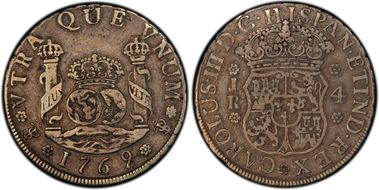




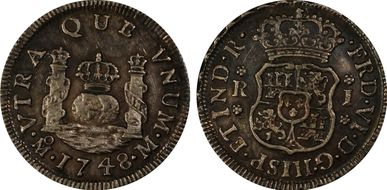







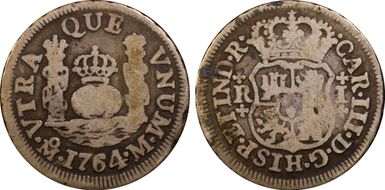
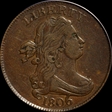
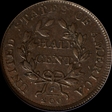
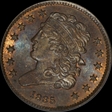
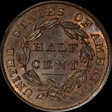
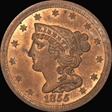
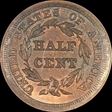
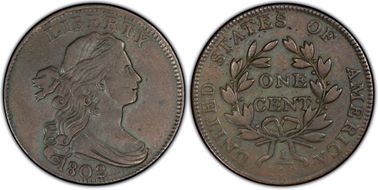
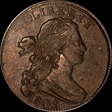
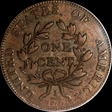
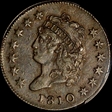
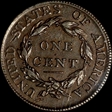
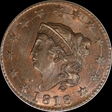
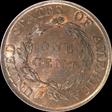
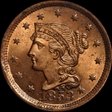
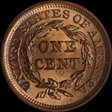
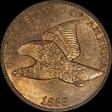
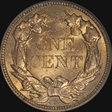
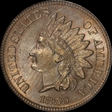
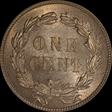
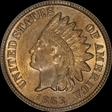
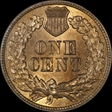
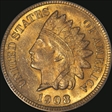
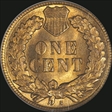
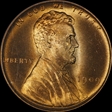
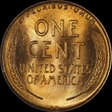
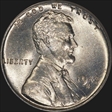
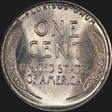


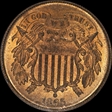
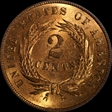


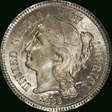
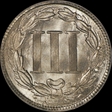
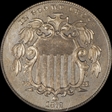
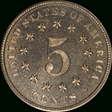
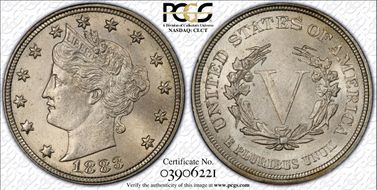
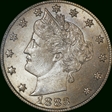
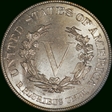
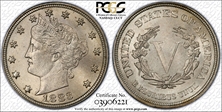
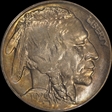
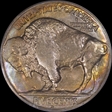
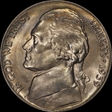
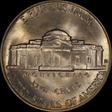

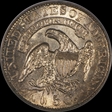


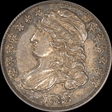
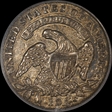
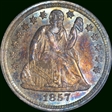
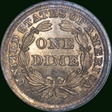
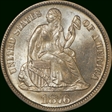
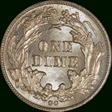
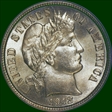
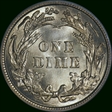
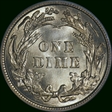
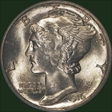
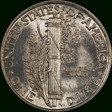
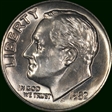
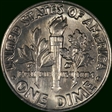
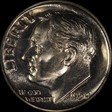
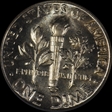
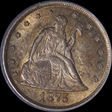
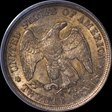
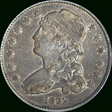
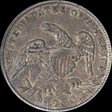
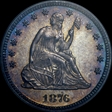
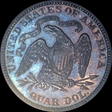
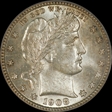
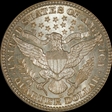
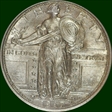
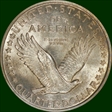
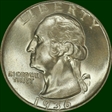
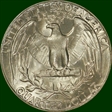


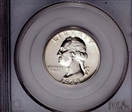
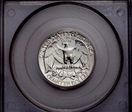
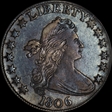



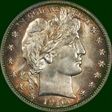
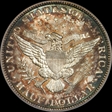
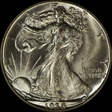
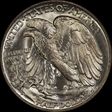
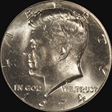
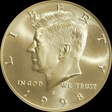
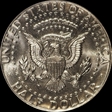
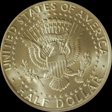
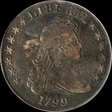
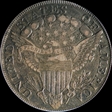
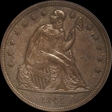
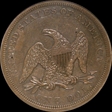
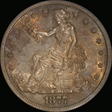
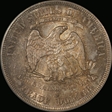

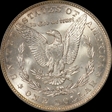
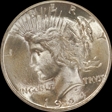
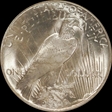
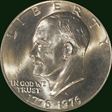

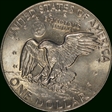
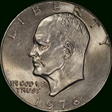

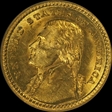
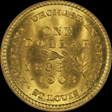
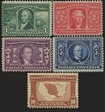
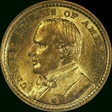
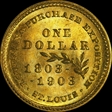

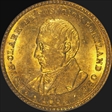
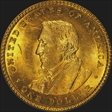
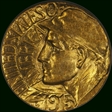
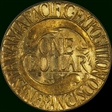
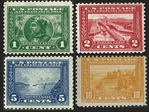
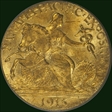
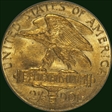
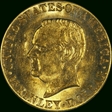
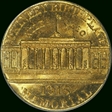
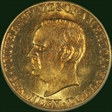
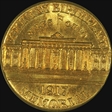

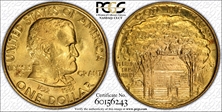
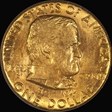
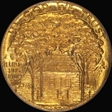
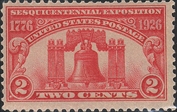
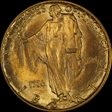
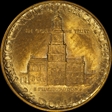
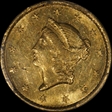
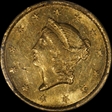
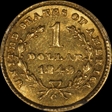
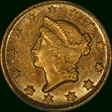
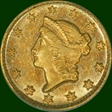

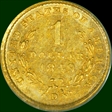
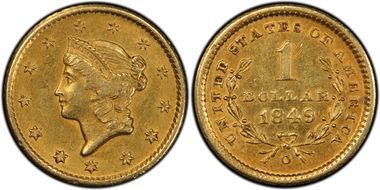
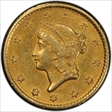
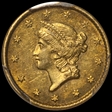
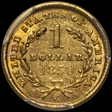

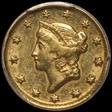
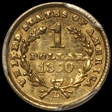
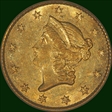
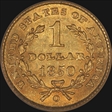


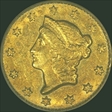
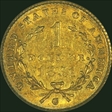
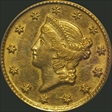
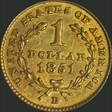
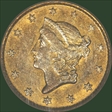
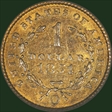
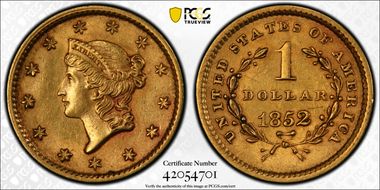
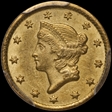
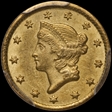
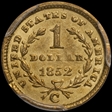
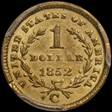

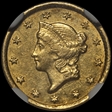
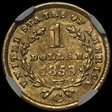

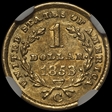
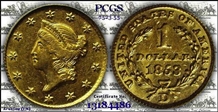
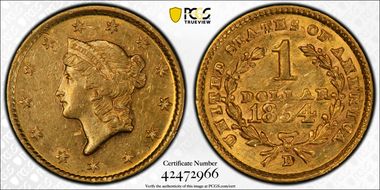


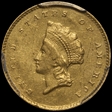
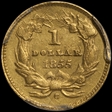
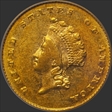
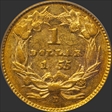
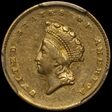
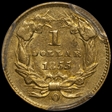
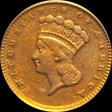
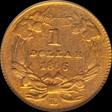

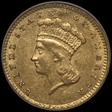
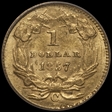
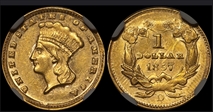
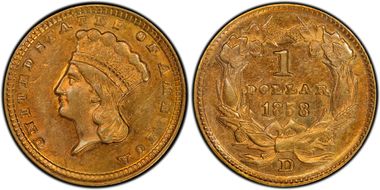
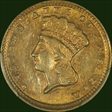
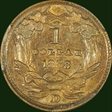
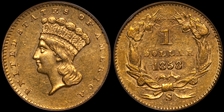
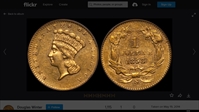
_album.jpg)
